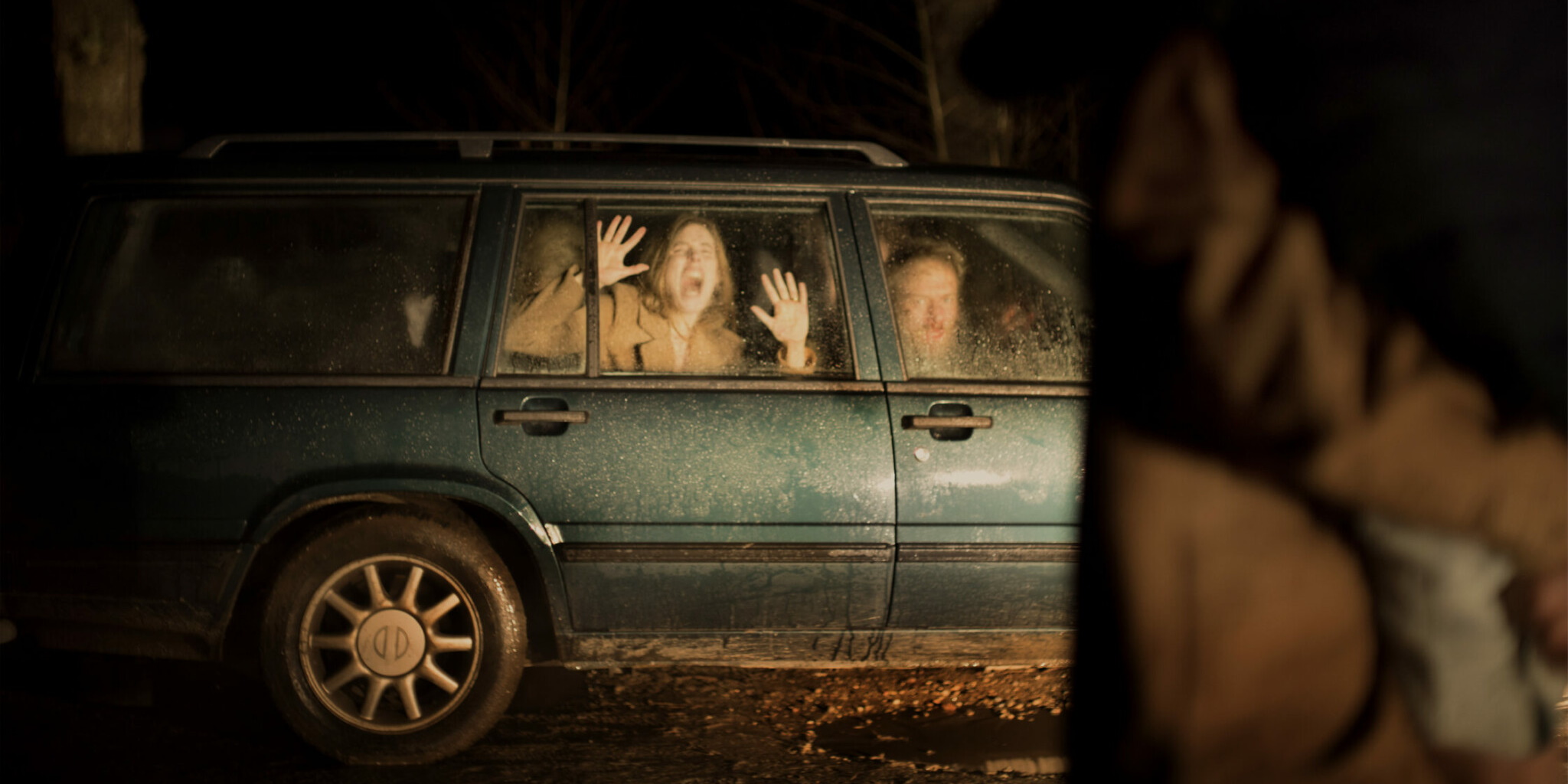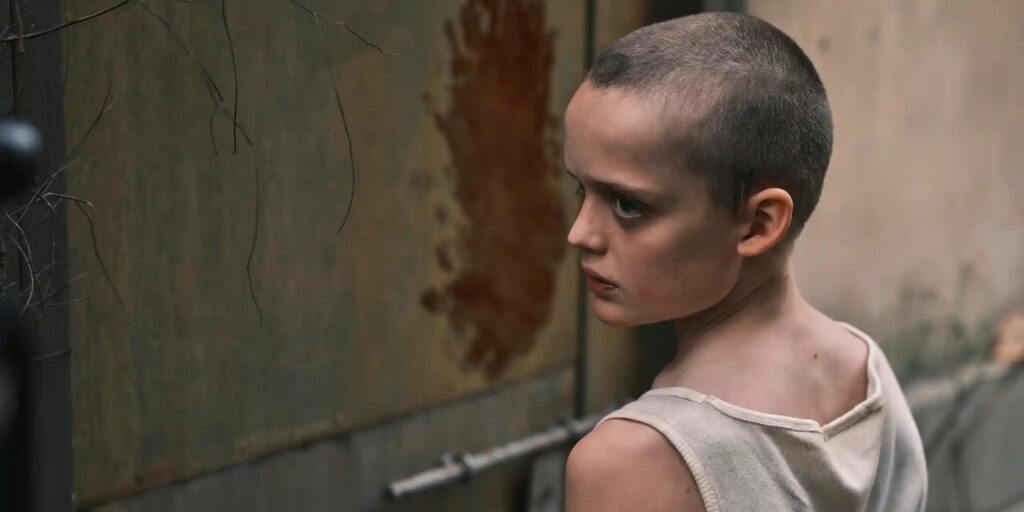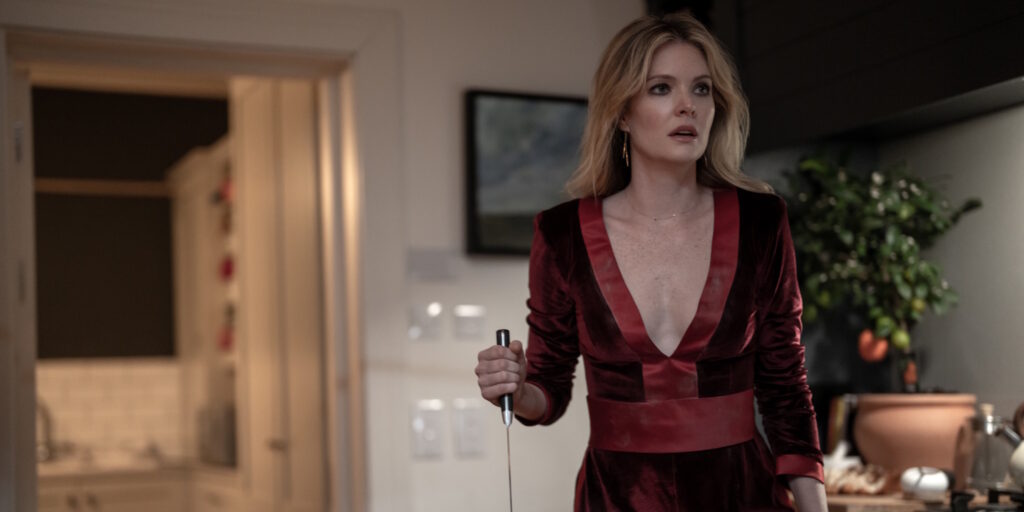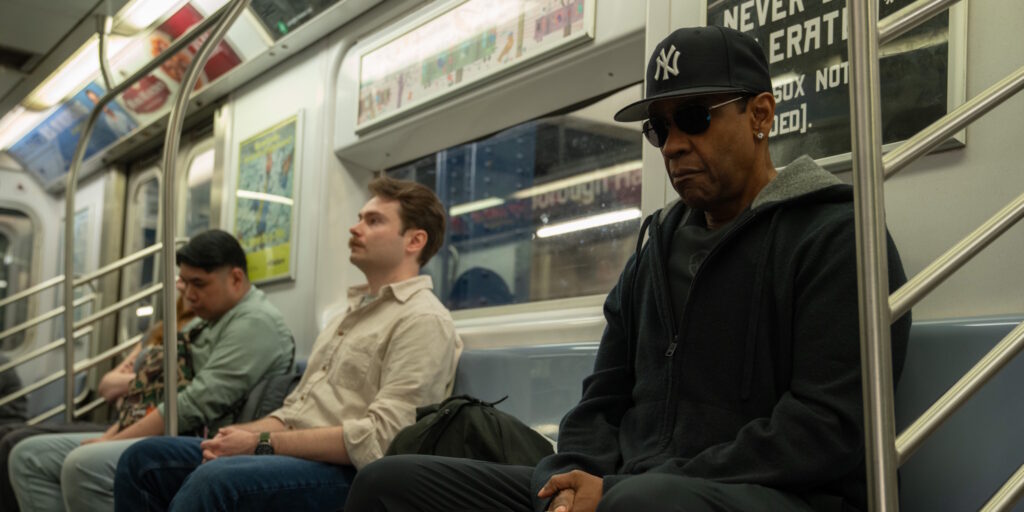[Originally published at Cinema St. Louis’ The Lens.]
One of the more fascinating horror subgenres that has exhibited a mini-boom in the past decade is what one might dub “The Cordial Invitation”: The oblivious protagonists answer a summons to an isolated location, where an initially benign (if eccentric) situation slowly escalates into a terrifying captivity scenario. By the time the doomed guests have conclusive evidence that their gracious hosts are devious sadists, the window for escape has already long since passed. Executing this formula effectively – as in, for example, Creep (2014), The Invitation (2015), or Get Out (2017) – is a tricky balancing act. If the red flags are too glaringly obvious, the story can annoy the audience with its psychological implausibility, provoking frustrated outbursts directed at the protagonist (“For god’s sake, just leave!!”). On the other hand, if a filmmaker holds their cards too close to their chest, the inevitable turn can feel like a cheap, contemptuous fake-out, less a genre twist than a smug con.
Whatever else one can say about director Christian Tadfrup’s contribution to this deeply discomfiting current of horror cinema, it has no intention of tricking its audience. From its very first POV shot of a car’s headlights bouncing unsteadily down a dirt road in the middle of nowhere, Speak No Evil presents an ironclad guarantee that something terrible is going to happen to its characters. However, while this imagery is vaguely portentous, it is Sune Kølster’s relentless, bombastic score that truly seals the deal. Instead of the ambient droning that accompanies so many arthouse-horror efforts these days, Kølster’s composition batters the viewer with all the subtlety of a Wagner opera, bellowing of the discord and doom to come. This sonic assault slowly fades after the film shifts to a panoramic daytime shot of a Tuscan country resort, but the seed has been planted. There will be blood.
The luckless characters, of course, cannot hear the non-diegetic warning siren in Kølster’s score. The screenplay – co-written by the director and his brother Mads Tafdrup – efficiently introduces us to a pleasant but unremarkable Danish family of three: Bjørn (Morten Burian), Louise (Sidel Siem Koch), and their young daughter, Agnes (Liva Forsberg). While holidaying in Italy, they strike up a casual acquaintance with Patrick (Fedja van Huêt), Karin (Karina Smulders), and their painfully shy son, Abel (Marius Damslev). Dutch vacationers who happen to be staying at the same resort, the newcomers quickly charm Bjørn and Louise with their easygoing warmth and excessive flattery. In particular, Patrick seems to leave a lasting impression on Bjørn. As a stereotypically polite and passive bourgeois Scandinavian – who is perhaps a bit more self-conscious about his softness than he is willing to admit – he is easily seduced by the other man’s rough, outspoken charisma.
Months later, Bjørn and Louise receive a postcard from Patrick and Karin, extending an open invitation to visit them at their home in the Netherlands and making a point to mention that the normally introverted Abel has been pleading to see Agnes again. Louise seems hesitant, but as one of her friends comments, “I think perhaps it would be a little impolite to decline.” Good manners and deference to the wishes of children accordingly win out, and soon Bjørn, Louise, and Agnes are embarking on the 10-hour ferry and car trip for a long weekend at Patrick and Karin’s cozy woodland home. Although nothing substantively sinister occurs in the first 15 minutes of the film, the viewer can practically hear the jaws of a trap slamming shut as the family crosses the threshold and doffs their coats into the hands of their smiling hosts.
Once the victims have willingly ventured into the monster’s lair, so to speak, the welcoming masquerade begins to slip, ever so slowly. As is often the case in social horror, it’s not one thing, but an accumulation of off-putting moments and awkward interactions. It’s Karin’s passive-aggressive reaction to the kitschy housewarming gift that Bjørn and Louise offer. It’s Patrick’s insistence that Louise – who he previously lauded for her eco-conscious vegetarianism – taste the roasted wild boar he has prepared. It’s Abel’s unintelligible whining through all hours of the night, which Patrick and Karin insist is a normal manifestation of their son’s congenital speech disability. Gradually, Patrick’s crass hostility escalates to something worrying, culminating in a double date at a local bar that goes drunkenly off the rails. Then there’s the strange little two-story outbuilding on the property, which is never mentioned or entered by the hosts. It seems normal enough when Bjørn peers in through the dim windows, perhaps a disused workshop or storage building. And yet.
Speak No Evil is a profoundly uncomfortable film, and not merely in the sense that it is priming the viewer to expect the worst from its opening moments. This is a movie about discomfort, and about how challenging it can be to extricate oneself from a situation that feels disagreeable in some definite but inexpressible way. It also functions as a meta-thriller about how easy it is to second-guess a horror-movie protagonist’s choices from the comfort of one’s theater seat or living-room sofa. Viewers who are easily put off by bad decision-making in survival stories will likely be infuriated by Speak No Evil. Due to a misguided sense of politeness or just a general uneasiness with confrontation, Bjørn and Louise’s maddening reluctance to cut and run from these weirdos they barely know is ultimately what seals their fate. It’s not as if Patrick and Karin make escape especially difficult: There are two explicit instances in which the proverbial door is left unlocked and ajar, but Bjørn’s go-along-to-get-along impulse ultimately pulls him back.
Whether or not one is irritated by the absurdity of the characters’ pathological unassertiveness, that absurdity is quite by design. Although there is a clear cultural specificity to the film’s navel-gazing, it also has a more universal dimension: Whether in work, politics, or relationships, everyone has moments where they smile and nod while screaming internally, because no real suffering is ever as painful as the imagined suffering of an uncomfortable confrontation. The Copenhagen-born Tadfrup (Parents, A Horrible Woman) is an actor and occasional filmmaker who has not previously played in the horror sandbox, although he clearly has the right aesthetic instincts for the genre. In interviews, he has been frank about the film’s connection to his social anxiety and his self-consciousness about his eager-to-please passivity. Although Bjørn is nothing so straightforward as an author insert character, it’s hard not to hear Tadfrup’s voice when he confesses through tears that, “I’m so tired of smiling all the time.”
This self-critique aspect of the film is perhaps that only thing that saves Speak No Evil from slipping into an unforgivably bleak and cruel exercise in sadism. And it is sadistic, to be sure, especially once Bjørn stumbles onto the horrifying truth of Patrick and Karin’s intentions, kicking off a grueling and ultimately futile struggle for survival. Although there is a whiff of black-hearted humor in the film, it is not truly satirical. One never senses that Tadfrup is snottily condemning the viewer, either for their real-world behavior or for their relationship to the images on the screen. (Funny Games, this is not.) It feels more like a savage act of frustrated self-expression, an attempt to make the characters – and thus the audience – feel a hyperbolic version of the discomfort that the filmmaker has experienced in the past.
Unfortunately, even a viewer sympathetic to Tadfrup’s intentions may not be able to stomach what often feels like a 97-minute death march through a sucking swamp of psychological and physical violence. Not since The Vanishing (1988) – another cautionary tale about avoiding creepy Dutchmen – has a thriller evoked such a suffocating aura of impotence and inevitability. Viewers who have children should consider this their content warning: Tadfrup has no compunctions about giving them a long, grisly look at their worst parental nightmares. There is very little in Speak No Evil that could be described as “entertaining” in the conventional sense, and the film even lacks the morsel of catharsis that often characterizes the most heinously violent French and Korean horror-thrillers. It is a Feel Bad Movie in the purest sense. Not pointlessly so, but it is certainly the sort of thing that only a self-selected niche audience will likely be interested in experiencing.
Speak No Evil will be available to stream on Shudder on Thursday, Sept. 15.




